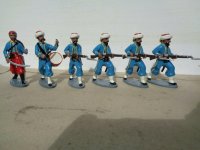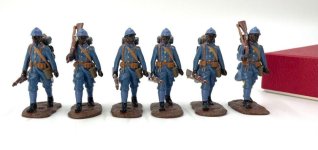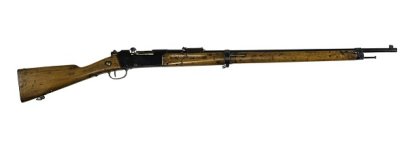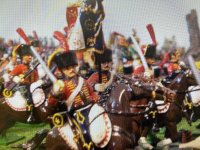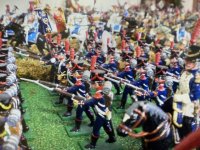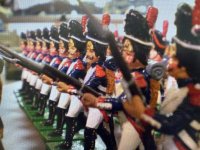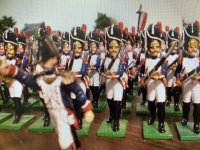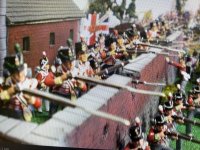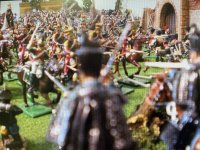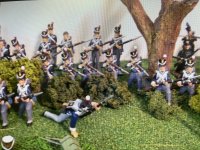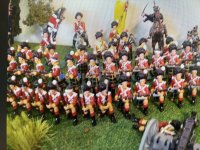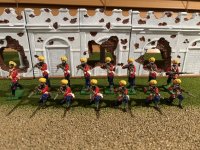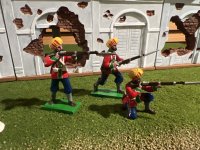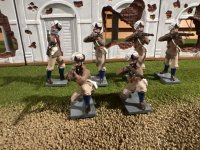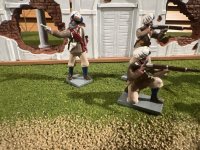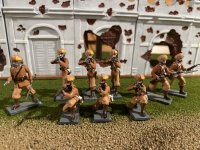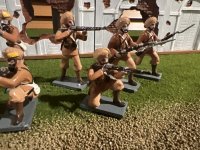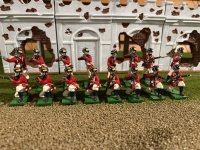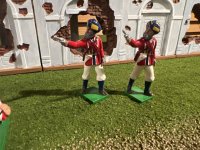boerboy
Master Sergeant
- Joined
- Jul 5, 2007
- Messages
- 1,220
Hawkeye,
This is further proof that these figures belong to the Boxer Rebellion range: Trophy’s Dragon Crest DC21, which features Turcos (Algerian Tirailleurs) in a Boxer Rebellion set. That set also uses oval bases, and the officer figure is virtually identical to the one in your set.
DC21 is relatively scarce but still occasionally turns up. So your set could either be "a special" or possibly a short experimental production run—that would be my guess.
One more interesting fact: the blue uniform for this regiment (DC21) is usually associated with the WWI period, so we can say with a fair degree of certainty that this was the first WWI set Trophy made. . Then Trophy made GW37 "French Colonial Division" in a long while.
. Then Trophy made GW37 "French Colonial Division" in a long while.
This is further proof that these figures belong to the Boxer Rebellion range: Trophy’s Dragon Crest DC21, which features Turcos (Algerian Tirailleurs) in a Boxer Rebellion set. That set also uses oval bases, and the officer figure is virtually identical to the one in your set.
DC21 is relatively scarce but still occasionally turns up. So your set could either be "a special" or possibly a short experimental production run—that would be my guess.
One more interesting fact: the blue uniform for this regiment (DC21) is usually associated with the WWI period, so we can say with a fair degree of certainty that this was the first WWI set Trophy made.


